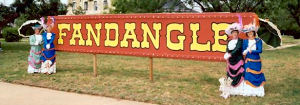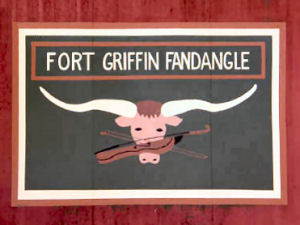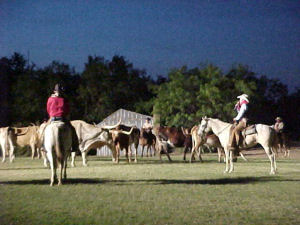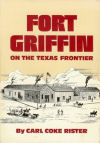
HOME
INTRO
SYMBOLS
ALMANAC
ECONOMY
GEOGRAPHY
STATE MAPS
PEOPLE
FORUM
NEWS
COOL SCHOOLS
STATE QUIZ
STATE LINKS
BOOK STORE
MARKETPLACE
NETSTATE.STORE
NETSTATE.MALL
GUESTBOOK
CONTACT US


Texas State Play

Texas State Play: Fandangle
Photograph: Fandangle Association
According to the Galveston Daily News, the inspiration for an official state play came after a meeting of the House of Representatives Subcommittee on Tourism. The topic of conversation; the Texas Sesquicentennial Celebration scheduled for 1986 that would mark the 150th anniversary of Texas' independence from Mexico.
On January 9, 1979 Senate Bill No. 93, authored by State Senator A.R. "Babe" Schwartz, was read for the first time.
It proposed that the historical outdoor drama, "The Lone Star," by Pulitzer Prize-winning dramatist Paul Green, be adopted as the official play of the State of Texas. After some minor changes, it was handily approved in the Texas Senate on April 24, 1979.
Schwartz
S.B. 93
A BILL TO BE ENTITLED
AN ACTrelating to an official state play; designating "The Lone Star" outdoor musical drama which is presented annually in the amphitheatre in Galveston Island State Park as an official play of the State of Texas; and declaring an emergency.
BE IT ENACTED BY THE LEGISLATURE OF THE STATE OF TEXAS;
SECTION 1. LEGISLATIVE FINDINGS. The Legislature of the State of Texas finds that:
(a) in 1821, Stephen F. Austin received a grant from Mexico to establish a colony in Texas for 300 families, this quota known as "the Old Three Hundred," with San Felipe de Austin on the Brazos serving as the seat of government; and
(b) in 1833, Stephen F. Austin traveled to Mexico City to present a state constitution and petition for reforms drafted at the Second Convention at San Felipe and was arrested and imprisoned by the Mexican President Santa Anna; and
(c) on March 2, 1836, a convention at Washington-on-the-Brazos declared Texas independent and named David G. Burnet president and Colonel Sam Houston commander-in-chief of the army; and
(d) on March 6, 1836, 187 Texans, commanded by Colonel William B. Travis, were besieged at the Alamo by 4,000 to 5,000 of Santa Anna's Mexican soldiers; and
(e) on April 21, 1836, Sam Houston's army routed the Mexican troops at the junction of the San Jacinto and Buffalo Bayou and captured Santa Anna; and
(f) this historic battle led to the independence of Texas and its later annexation to the United States; and
(g) the Lone Star Historical Drama Association, endorsed by the Daughters of the Republic of Texas and working cooperation with the Texas Parks and Wildlife Department, is proud of this stirring saga of the history of the state an presents an annual outdoor musical drama "The Lone Star" to reenact the founding of the Republic; and
(h) this outstanding moment in the history of our state and our nation as recreated in this annual outdoor drama is worthy of official recognition and encouragement.
SECTION 2. DESIGNATION AS STATE PLAY. The historical outdoor drama by Pulitzer-prize winning playwright Paul Green known as "The Lone Star," presented annually by the citizens of the State of Texas and the City of Galveston, is hereby designated and official play of the State of Texas.
SECTION 3. EMERGENCY. The importance of this legislation and the crowded condition of the calendars in both houses create an emergency and an imperitive public necessity that the constitutional rule requiring bills to be read on three several days in each house be suspended, and the rule is hereby suspended, and that this Act take effect and be in force from and after its passage, and it is so enacted.
When Senate Bill No. 93 moved into the Texas House of Representatives, "The Lone Star" found company. The House Committee on State Affairs decided to embellish the work of Senator Schwartz and composed a substitute bill that included three additional historical plays; the outdoor historical drama, "Texas," also by Paul Green; the outdoor historical drama, "Beyond the Sundown," by Kermit Hunter; and the outdoor historical musical, "Fandangle," created by Robert Nail.
By: Schwartz (McLeod) S.B. No. 93
Substitute the following for S.B. No. 93.
By: Grubbs C.C.S.B. No. 93
AN ACT
relating to the designation of official state plays.
BE IT ENACTED BY THE LEGISLATURE OF THE STATE OF TEXAS;
SECTION 1. The legislature finds that:
(1) the historic battles of San Jacinto, Goliad, and the Alamo that led to the independence of Texas are portrayed faithfully and artistically at Galveston Island State Park in the play, The Lone Star;
(2) the lives of early settlers of the Panhandle of Texas are portrayed colorfully and creatively each year at the Palo Duro Canyon State Park in the play, Texas;
(3) the relationship between early settlers of East Texas, especially General Sam Houston and the Alabama-Coushatta Indians, is portrayed historically and excitingly at the Alabama-Coushatta Indian Reservation in the play Beyond the Sundown; and
(4) the founding of Fort Griffin and the lived of the settlers of Shackleford County and Albany, Texas, during the 1870s and 1880s are depicted during the last two weeks in June annually in Shackleford County in the play Fandangle.
SECTION 2. The Lone Star, presented in Galveston Island State Park, Texas presented in Palo Duro Canyon State Park, Beyond the Sundown, presented at the Alabama-Coushatta Indian Reservation, and Fandangle, presented in Shackleford County, are designated official plays of the State of Texas.
SECTION 3. The importance of this legislation and the crowded condition of the calendars in both houses create and emergency and an imperative public necessity that the constitutional rule requiring bills to be read on three several days in each house be suspended, and the rule is hereby suspended, and that this Act tack effect and be in force from and after its passage, and it is so enacted.
The House substitute was approved by the Senate on May 25, 1979.
"Fandangle," created by Robert Nail, was declared one of four official plays of the State of Texas when Governor William P. Clements signed Senate Bill No. 93 into law on June 6, 1979.
Fandangle still entertaining

Texas State Play: Fandangle
"Fandangle" is the oldest of the four plays that hold official status in Texas. It was written and directed by Robert Nail, an Albany native, in 1938. It's directed, costumed, sung and danced by the citizens of Albany, Texas.
The Fort Griffin Fandangle logo combines a longhorn steer, commemorating a pioneering past, and a bow and fiddle, represents "The music and merriment we mean to create in your hearts."
Its purpose is to commemorate Fort Griffin which provided protection from angry Indians for early settlers from 1867 to 1881. The show is primarily focused on entertainment.
An outdoor musical based on the pioneer chronicles of West Texas. Spectacle-A-Plenty... of cowboys driving a trail herd; of a stagecoach chased by Indians; of buffalo hunters & gamblers at old Fort Griffin.
("Fort Griffin Fandangle")
Billed as Texas' oldest outdoor musical, "Fandangle" plays the last two full weekends in June (Thursday, Friday, and Saturday at 8:45 P.M.) rain or shine.
Texas Law
The following information was excerpted from the Texas Statutes: Government Code, Title 11, Subtitle A, Chapter 3101, Section 3101.011.
TITLE 11. STATE SYMBOLS AND HONORS; PRESERVATION
SUBTITLE A. STATE SYMBOLS AND HONORS
CHAPTER 3101. STATE SYMBOLS
Sec. 3101.011. STATE PLAYS.
Sec. 3101.009. STATE PLAYS. The following plays are official state plays of Texas:
(1) The Lone Star presented in Galveston Island State Park;
(2) Texas presented in the Palo Duro Canyon State Park;
(3) Beyond the Sundown presented at the Alabama-Coushatta Indian Reservation; and
(4) Fandangle presented in Shackelford County.
Added by Acts 2001, 77th Leg., ch. 1420, Sec. 7.001, eff. Sept. 1, 2001.
Sources...
"House Bill No. 2812." The Legislature of the State of Texas. The State of Texas, 2005. Web. 27 Sep 2011.
"Fort Griffin Fandangle." Fort Griffin Fandangle. The Fandangle Association, n.d. Web. 6 Mar 2012.
Additional Information

Texas State Play: Fandangle
The Cowboy's Prayer - Photograph: Fandangle Association
FORT GRIFFIN FANDANGLE: Texas State Historical Association: The Handbook of Texas Online.
1984 Fort Griffin Fandangle: Video documenting Albany, Texas’ 1984 Fandangle event, an annual parade and outdoor play/musical celebrating the area’s history and settlement. Dolph Briscoe Center for American History. © John M. Pinto/Dolph Briscoe Center for American History.
Fort Griffin Fandangle: Official website.
Other official plays of the State of Texas:
FORT GRIFFIN: Texas State Historical Association: The Handbook of Texas Online.
The Most Dangerous Prairie in Texas: University of Texas at Austin; Texas Beyond History; The Virtual Museum of Texas' Cultural Heritage.
Fort Griffin State Historic Site: Official website.
More symbols & emblems: Complete list of official Texas state symbols from NETSTATE.COM.

Fort Griffin on
the Texas Frontier
Carl Coke Rister
Fort Griffin on the Texas Frontier, by Carl Coke Rister. 232 pages. Publisher: University of Oklahoma Press (April 1986) This fort, established in 1867 near the Llano Estacado, in the heart of the Comanche country, was the capital for buffalo hunters, cowboys, and ranchers, until 1880.
Fort Griffin on the Texas Frontier is an in-depth regional history with attention to environmental conditions, Indian problems, military campaigns, economic development, and social and cultural activities.

A Texas Frontier
Ty Cashion
A Texas Frontier: The Clear Fork Country and Fort Griffin, 1849-1887, by Ty Cashion. 384 pages. Publisher: University of Oklahoma Press (January 15, 1997) In A Texas Frontier: The Clear Fork Country and Fort Griffin, 1849-1887, Ty Cashion surveys the formative development of northwest Texas where the Clear Fork of the Brazos cuts a path between the timbered region and the treeless plains beyond. Despite the unfamiliar and often harsh environment, the first pioneers—mainly southern stock raisers—persisted through conflicts with Plains Indians, the Civil War, Reconstruction, outlawry, rapid settlement, and diversification to form a ranching-based social and economic way of life. The process turned a largely southern people into westerners.
Others helped shape the history of the Clear Fork country as well. Notable among them were Anglo men and women—some of them earnest settlers, others unscrupulous opportunists—who followed the first pioneers; Indians of various tribes who claimed the land as their own or who were forcibly settled there by the white government; and African Americans, both former slaves and buffalo soldiers and their families, who remained on the land after their terms of enlistment expired.

